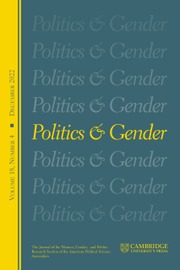“I wish Julia Gillard was more like Angela Merkel,” a white Australian man tells me during my high school exchange in Brisbane, Australia, after learning of my German citizenship. “She just seems to do a much better job at everything.” These comparisons were frequent during my year abroad: From 2010-13, Gillard was Australia’s first and, to date, only female prime minister. Many Australians I encountered during her tenure immediately compared her to Merkel, who served as the first female German chancellor from 2005-21. This is, perhaps, unsurprising given that at the time, Gillard and Merkel were two of only 16 female state premiers worldwide (as of 2025, this number has fallen to 12).
However, it also raises broader questions: Who represents the nation-state internationally? Which experiences do women like Gillard and Merkel make in these positions? How do women who are not state leaders but represent the state as diplomats, police officers, or soldiers fare in these international contexts? And how might the answer to these questions be influenced by gender and sexuality?
Elise Stephenson’s book, The Face of the Nation, provides answers for the Australian context. Analyzing representational, survey, and interview data alongside policy documents, she interrogates how the Australian Department of Foreign Affairs and Trade, the civil Department of Defence, the military Australian Defence Force, the Department of Home Affairs, and the Australian Federal Police are gendered. Unlike much of the diplomacy studies scholarship, Stephenson thus goes beyond analyzing “traditional” diplomatic institutions. This makes for some highly interesting comparative findings. Particularly notable is that there are more women leaders in militaristic and paramilitaristic institutions than in traditional diplomatic institutions (9). One reason for this is the fact that women face more overt discrimination and toxic masculinity at the former, making them somewhat easier to identify and confront. By contrast, the latter may be characterized by what Stephenson calls “genteel toxic masculinity”: a form of masculinity grounded in “upper-middle class, genteel, and ‘cultured’ norms” (137). Similar forms of masculinity exist in diplomatic institutions globally (Aggestam and Towns Reference Aggestam and Towns2018). As a result, “gendered behaviours were often harder to spot (and therefore harder to believe)” (84) — even if equality, diversity, and inclusion policies are in place.
Another significant finding is that queer women with wives fare better than straight women with husbands in navigating the diplomatic double burden. International relations and diplomacy studies scholarship has shown that diplomacy rests on significant invisible labor of women, including as diplomats, diplomatic wives, or domestic staff (Enloe Reference Enloe2014; Erlandsson Reference Erlandsson2022). The “ideal” diplomat is still imagined as male and straight, with a female trailing spouse who cares for children and the household, organizes receptions and dinners, and arranges moves to postings abroad. Stephenson finds that queer women with wives meet this ideal not necessarily because they have inherently more equal relationships, but because female spouses tend to be more engaged in care work, managing the household, and other informal diplomatic functions (214–5). This is a significant contribution to the literature as it goes beyond studying diplomatic couples with a male envoy and a female trailing spouse, or a female envoy and a male trailing spouse. Stephenson reminds us that “The diplomatic double burden is both gendered and heteronormative […].” (214, emphasis added). These insights are relevant beyond academia, given the recent trend to both adopt and reject gender equality and diversity as international norms (Achilleos-Sarll et al. Reference Achilleos-Sarll, Thomson, Haastrup, Färber, Cohn and Kirby2023; Färber Reference Färber2025a).
In addition to the valuable empirical findings, Stephenson’s theoretical framework is of note. She elegantly combines feminist institutionalist approaches with an intersectional lens, which allows her to study complex gendered and sexualized dynamics across the respective institutions, host countries, the diplomatic family, and fields of work. While the framework makes possible analyses that include gender in its intersection with sexuality, race, Indigeneity, class, or disability, and the book highlights these power structures as important, it does not address them equally in the empirical analysis. It would have been interesting to learn even more about how race, Indigeneity, or disability shape women’s experiences beyond the discussion of women leaders in Chapter 5 and individual women’s stories presented in Chapter 8. As Stephenson notes, it was only in 2022 that Penny Wong broke through the glass ceiling in multiple ways: she became the first Australian foreign minister who was both queer and of Color (128). By comparison, Germany has never had an openly queer female foreign minister or foreign minister of Color, yet gender, race, and class significantly shape the German diplomatic service (Färber Reference Färber, Stephenson and Rathore2025b). Stephenson inspires us to take these intersections seriously, and scholars of diplomatic institutions can certainly make use of her intersectional feminist institutionalist framework to study them further.
Elise Stephenson has written an impressive book that makes a strong contribution to international relations and diplomatic studies: packed with rich empirical data, groundbreaking analysis, and academic concepts that are applicable to many analytical sites in Australian diplomacy and elsewhere. I would highly recommend this book to anyone who seeks to understand gendered institutions in diplomacy and beyond.

